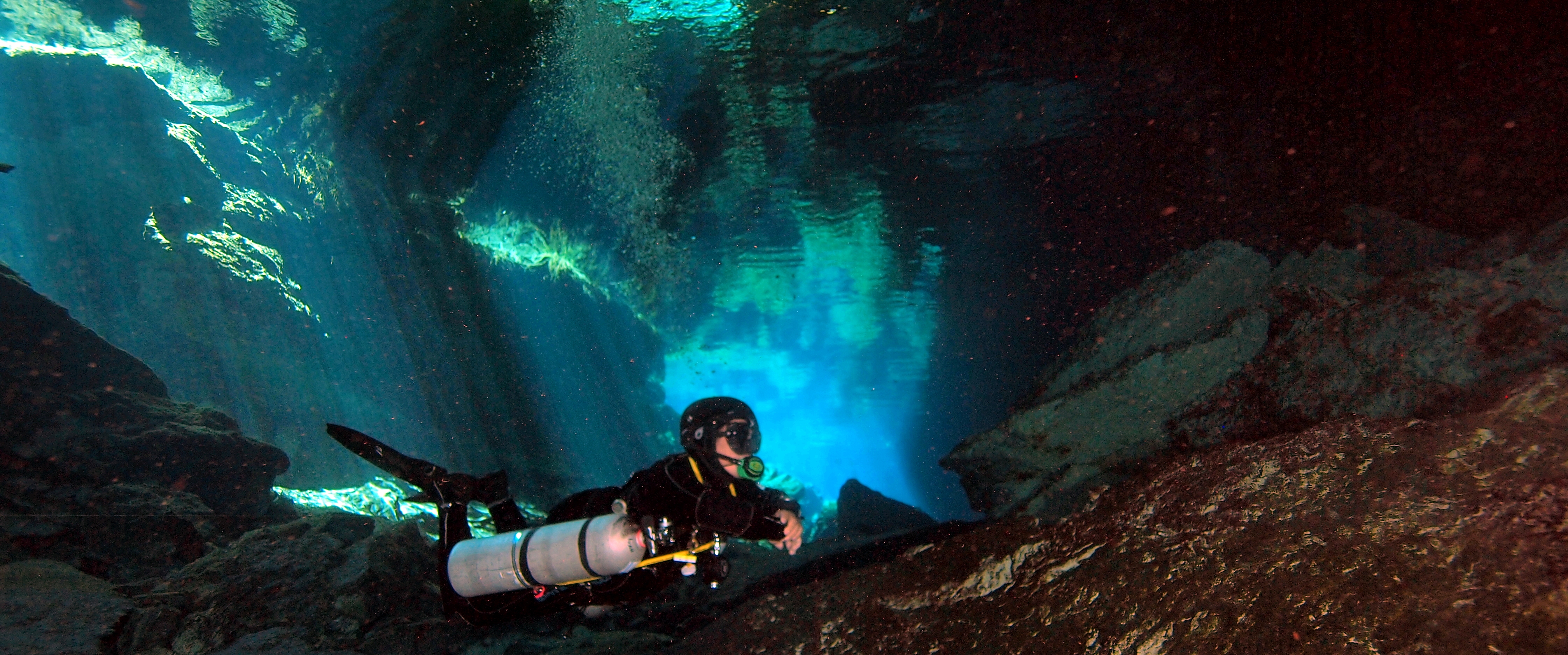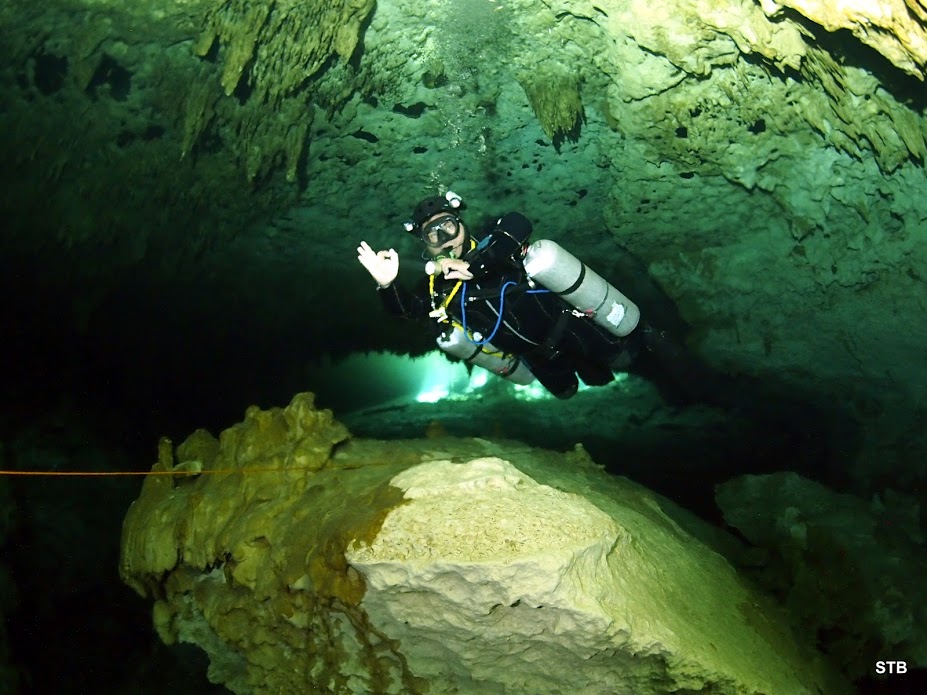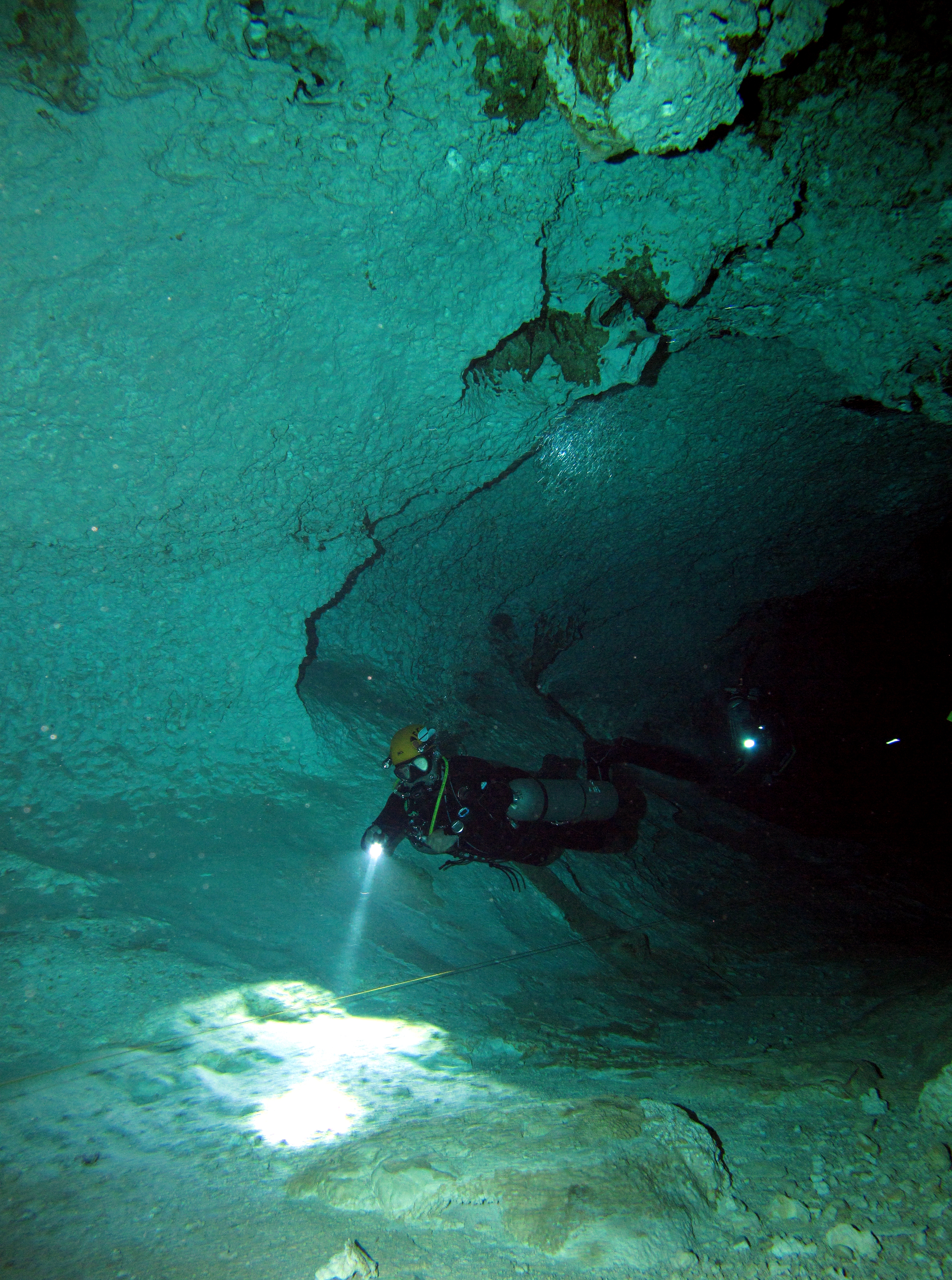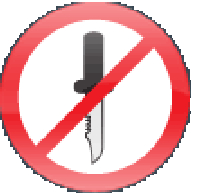






Cenotes/Cavern diving
Around 65 million years ago The Yucatan Peninsula was a living shallow coral reef and ocean floor and is now a vibrant jungle. Underneath lays an intricate network of underground rivers where the fresh water flow back to the ocean.
The cenotes are areas where sections of cave roof have collapsed revealing an underlying cave system, this openings windows into incredible underground rivers. The Cenote water is very clear, as the water comes from rain water filtering slowly through the ground.
The visibility in the Cenotes averages over 100 feet! The minimum water temperature is a fairly constant 77F / 25C and average depths are only 35ft / 10m or shallower.
We have access to several world famous “cenotes” (underground rivers) with spectacular caves and caverns that are very safe for certified divers to dive in with Ivan how is specially train to take people in this nature wonders. Your cavern dives will be a unique diving experience unlike anything you have done before.
Taking Part in a cavern tour allows Open Water Divers to safely discover unique phenomenons exclusive to this amazing under ground under water world like the mysterious Halocline. As well as enjoy the breath taking beauty of the decorations (stalactites, stalagmites and columns, flow stones, draperies, travertine pools, and soda straws), the incredible light effects and the many fossilized creatures that used to inhabit this ancient ocean bed.
At Dive With Natalie and Ivan we recognize and promote experiencing the caves with a knowledgeable and well informed guide. In your ultimate interest, the guided cave dives extend your enjoyment through extensive bottom time and well thought out dive plans
A CAVERN DIVE IS NOT A CAVE DIVE.
CAVERN DIVES ARE CONDUCTED IN THE AMBIENT LIGHT ZONE OF THE CAVE ENTRANCE CLOSE TO OPEN WATER.
REQUIREMENTS FOR DIVERS IN THE CAVERNS ARE DIFFERENT TO THOSE FOR OPEN WATER DIVING AND WILL BE CLEARLY OUTLINED BY YOUR CAVERN GUIDE.
GENERAL RULES: No knifes, Gloves or Snorkels. Touch nothing, take nothing, leave nothing. Streamline Equipment – no dangling pressure gauges and octopuses. No grabbing or pulling on speleothems. Try not to touch or disturb sediments or mark them in any way.
GUIDED GROUPS: All open water divers must be accompanied in the caverns by a certified cavern guide, who is full cave certified and Open Water Dive Master or higher rating. The guide must use full cave equipment configuration including double tanks, which are required for air management and handling of potential emergencies. There is a maximum ratio of 4 divers allowed with each guide. Cavern divers should dive in single file behind their guide staying close together.
AIR (GAS) MANAGEMENT: Cavern diving uses the ‘rule of thirds’ for gas managment. One third of the initial gas supply is used for ingress, one third for egress, and one third emergency reserve in case of delayed exit or to support another team member. All Cavern dives have to be no decompression dives.
NATURAL DAYLIGHT ZONE: The area of the cavern is within the natural daylight zone of the cave entrance. Divers need to be within 60m / 200ft of the nearest open water. As well each diver must be equiped with a minimum of one light, which stays on during the entire dive.
BUOYANCY AND TRIM: Position and buoyancy control are the key to good, safe and enjoyable cavern diving and to be honest diving in general. The divers position should be horizontal, preventing the legs and fins dropping and stirring up sediments from the floor of the cavern. As well Cavern Divers shoud use an appropriate propulsion technique such as the frog kick to push the water to the sides and not to the ceiling or the floor.
NO RESTRICTIONS: The lines in the caverns are laid, that there are no restrictions on the way and at all time there’s space for at least two divers to dive next to each other.
CAVERN LIMITS: Stay close to the guide line maintaining a visual reference to it at all times. Stop, skull or grim reaper signs mark the limit of the cavern zone and should not be passed. Passing these signs take you into the cave zone, which is extremly unsafe without the proper cave training and equipment.
FOLLOWING THESE RULES MAKES CAVERN DIVING A SAFE AND ENJOYABLE EXPERIENCE!











